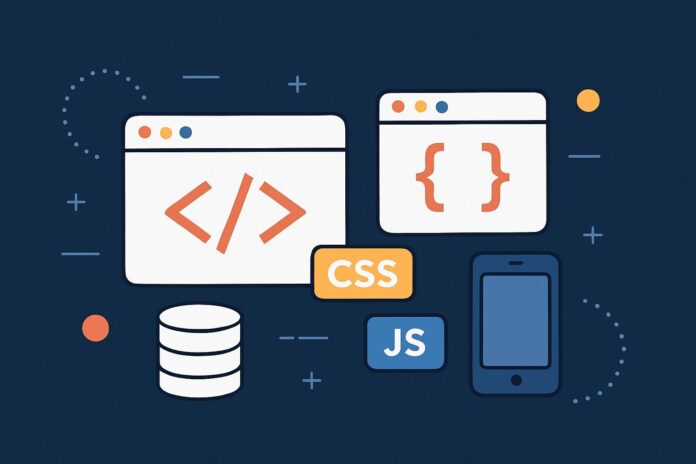Understanding Objects in JavaScript
In JavaScript, objects are a collection of key-value pairs, where each key is a string (or Symbol), and each value can be any type of data, such as a string, number, array, function, or even another object. Objects are used to store related data and to model real-world entities. They are one of the most important data structures in JavaScript.
In this module, we’ll explore how to create, manipulate, and use objects in JavaScript.
Table of Contents
- What is an Object?
- Creating an Object
- Accessing and Modifying Object Properties
- Methods in Objects
- Iterating Over Objects
thisKeyword in Objects- Object Destructuring
- Object-Oriented Programming and Prototypes
- Best Practices for Objects
- Conclusion
1. What is an Object?
An object is a collection of properties. Each property consists of a key (also called a property name) and a corresponding value. Objects are the foundation of much of JavaScript, and they allow you to group related data and functions together.
For example, an object could represent a person and contain properties such as name, age, and gender, and even methods such as greet() that output a greeting.
2. Creating an Object
There are two main ways to create objects in JavaScript: using object literals and the new Object() constructor.
Using Object Literals
The most common way to create an object is by using the object literal syntax:
let person = {
name: "Alice",
age: 25,
gender: "Female"
};
In this example, person is an object with three properties: name, age, and gender.
Using the new Object() Constructor
You can also create an object using the Object() constructor:
let person = new Object();
person.name = "Alice";
person.age = 25;
person.gender = "Female";
However, the object literal syntax is preferred because it is shorter and more readable.
3. Accessing and Modifying Object Properties
To access the properties of an object, you can use either dot notation or bracket notation.
Dot Notation
console.log(person.name); // Outputs: Alice
console.log(person.age); // Outputs: 25
Bracket Notation
Bracket notation is useful when the property name is dynamic (i.e., stored in a variable) or not a valid identifier (e.g., contains spaces or special characters).
console.log(person["name"]); // Outputs: Alice
let property = "age";
console.log(person[property]); // Outputs: 25
You can also modify an object’s properties using either notation:
person.name = "Bob";
person["age"] = 30;
4. Methods in Objects
Objects can also contain methods, which are functions stored as object properties. These methods can operate on the object’s properties and perform specific tasks.
Example of a Method
let person = {
name: "Alice",
age: 25,
greet: function() {
console.log("Hello, my name is " + this.name);
}
};
person.greet(); // Outputs: Hello, my name is Alice
In this example, the method greet uses the this keyword to refer to the name property of the object.
5. Iterating Over Objects
You can iterate over the properties of an object using a for...in loop. This loop iterates through all the enumerable properties of the object.
let person = {
name: "Alice",
age: 25,
gender: "Female"
};
for (let key in person) {
console.log(key + ": " + person[key]);
}
This would output:
name: Alice
age: 25
gender: Female
Note that the for...in loop iterates over all enumerable properties, including those that are inherited.
6. this Keyword in Objects
The this keyword refers to the object from which the method was called. Inside an object method, this allows access to the object’s properties.
Example:
let person = {
name: "Alice",
age: 25,
greet: function() {
console.log("Hello, my name is " + this.name);
}
};
person.greet(); // Outputs: Hello, my name is Alice
Here, this.name refers to the name property of the person object. If you change the context (i.e., call the function in a different object), this will refer to the new context.
7. Object Destructuring
Introduced in ES6, object destructuring is a convenient way to extract values from an object and assign them to variables.
Example:
let person = {
name: "Alice",
age: 25,
gender: "Female"
};
let { name, age } = person;
console.log(name); // Outputs: Alice
console.log(age); // Outputs: 25
You can also assign default values during destructuring if the property doesn’t exist:
let { name, occupation = "Unknown" } = person;
console.log(occupation); // Outputs: Unknown
8. Object-Oriented Programming and Prototypes
In JavaScript, Object-Oriented Programming (OOP) is possible through prototypes. Every object in JavaScript has a prototype, which is another object that it inherits methods and properties from.
Prototypes and Inheritance
You can create a constructor function to define objects and inherit from prototypes:
function Person(name, age) {
this.name = name;
this.age = age;
}
Person.prototype.greet = function() {
console.log("Hello, my name is " + this.name);
};
let person1 = new Person("Alice", 25);
person1.greet(); // Outputs: Hello, my name is Alice
Here, person1 inherits the greet method from the Person prototype.
9. Best Practices for Objects
- Use meaningful property names: Choose descriptive names for your object properties to make your code more readable.
- Group related data: Use objects to group related data together. For example, an object representing a car might contain properties like
model,year, andengineType. - Avoid global objects: Keep your objects inside functions or blocks to avoid polluting the global scope.
- Use
constfor objects: Declare objects withconstto prevent reassignment, even though the properties of the object can still be modified.
10. Conclusion
Objects are a fundamental part of JavaScript and are used to store and manipulate data efficiently. They allow you to model real-world entities and build complex applications. In this module, we covered the basics of creating, accessing, and manipulating objects, as well as some advanced features like prototypes and destructuring. In the next module, we will dive into Arrays in JavaScript, where we’ll explore working with lists of data.


